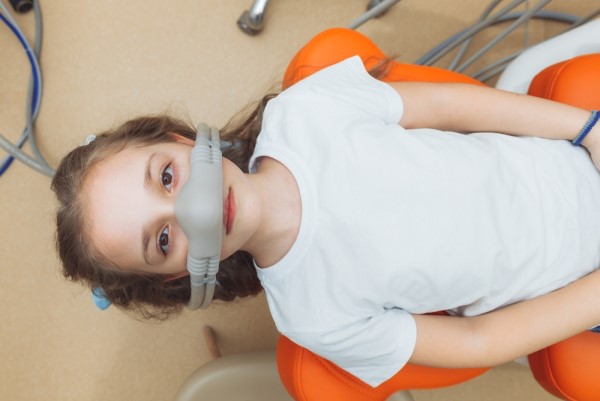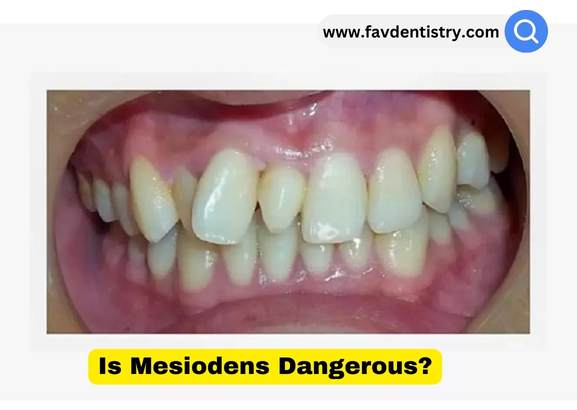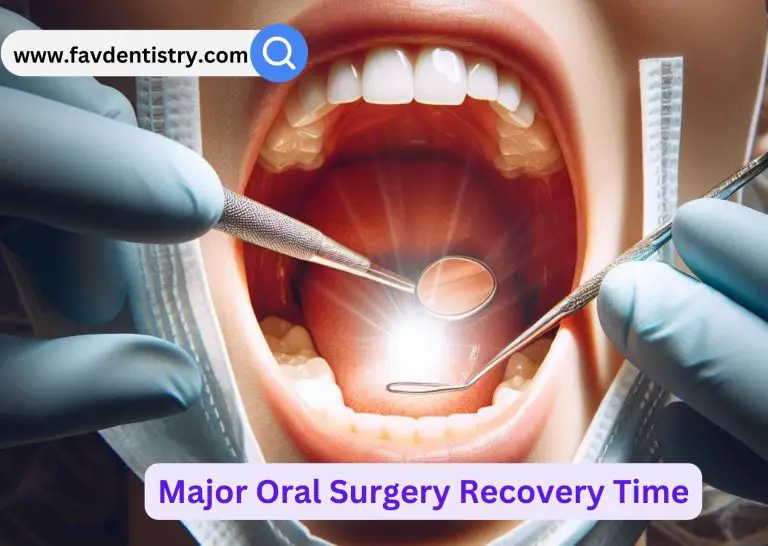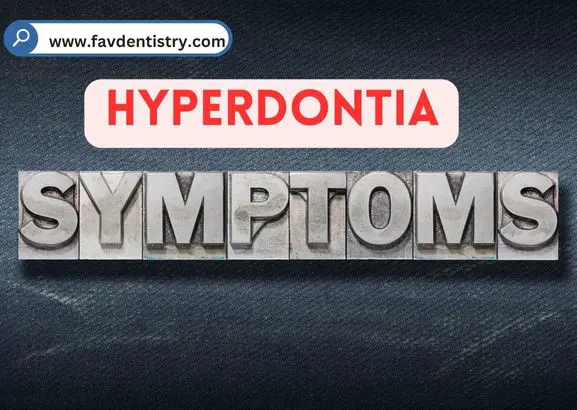Last Updated on 2 days by Dr. Michelle G. Brito
Nitrous oxide sedation is a safe and effective method for reducing anxiety in children during dental procedures. With its quick onset and recovery time, it allows for a smooth and comfortable experience for both the child and the dentist.
Nitrous oxide sedation, commonly known as laughing gas, is a widely used method in pediatric dentistry to help alleviate anxiety and fear in children during dental procedures. This effective technique involves the administration of a mixture of nitrous oxide and oxygen through a mask placed over the child’s nose.
Nitrous oxide acts as a mild sedative, inducing a relaxed and euphoric state, while the child remains conscious and responsive throughout the procedure. One of the key advantages of nitrous oxide sedation is its quick onset and recovery time, making it an ideal option for children who require dental treatment but may have difficulty sitting still or cooperating. This safe and well-tolerated sedation method allows dentists to perform necessary procedures with ease and minimal discomfort for the young patient. Furthermore, it provides a positive dental experience for children, helping to reduce anxiety and build trust for future visits.
What Is Nitrous Oxide Sedation?
Nitrous oxide sedation, commonly known as laughing gas, is a safe and effective method used in pediatric dentistry to help young patients stay relaxed during dental procedures. This odorless gas is mixed with oxygen and administered through a mask placed over the child’s nose. It induces a calming effect and reduces anxiety, making dental treatments more comfortable for children.
Nitrous oxide has been extensively studied and has a proven safety record in pediatric dentistry. It is well-tolerated and quickly eliminated from the body once the mask is removed, allowing children to recover rapidly and resume normal activities. The small dosage used for sedation ensures that the child remains conscious and responsive throughout the procedure, without any long-lasting effects or risk of overdose.
Nitrous oxide sedation is unique compared to other dental sedatives in several ways. Unlike general anesthesia, it does not render the child unconscious and maintains the child’s natural reflexes. The level of sedation can be adjusted as per the child’s needs, providing a personalized experience. Additionally, there is no prolonged recovery time associated with nitrous oxide sedation, allowing children to leave the dental office feeling refreshed and ready to continue their day.

Credit: www.hvkidsmiles.com
A Gentle Approach For Kids
Nitrous Oxide Sedation is a gentle approach for pediatric dentistry, specifically aimed at alleviating dental anxiety in young patients. The experience of nitrous oxide sedation is designed to ensure the utmost comfort of children during dental procedures.
Nitrous oxide, also known as laughing gas, is a safe and effective sedative that helps children relax and remain calm during dental treatments. It is administered through a small mask that is placed over the child’s nose, allowing them to breathe in a mixture of nitrous oxide and oxygen. The sedation induces a feeling of euphoria and reduces anxiety, making the dental experience less intimidating for young patients.
One of the key advantages of nitrous oxide sedation is its quick onset and recovery time. The sedative effect starts within minutes and wears off soon after the mask is removed, allowing children to resume their normal activities without any lingering effects.
During procedures, pediatric dentists ensure the comfort of children by creating a child-friendly environment. Dentists and their staff are specially trained to communicate with kids and use age-appropriate language to explain the treatments. They also employ playful distractions, such as toys or TV shows, to divert attention from the dental procedures.
The use of nitrous oxide sedation in pediatric dentistry is a valuable tool to help children overcome their dental fears and anxiety. Providing a gentle approach and ensuring child comfort, it enables young patients to receive the necessary dental care in a stress-free manner.
Nitrous Oxide Sedation Procedure
Nitrous oxide sedation is commonly used in pediatric dentistry to help children feel more relaxed and comfortable during their dental visits. Before the procedure, it is important to prepare your child for the dental visit to ensure everything goes smoothly. This includes explaining what to expect during the appointment and reassuring them that the procedure is safe and painless.
During the administration of nitrous oxide, a small mask is placed over your child’s nose, allowing them to inhale a mixture of nitrous oxide and oxygen. This gas helps to reduce anxiety and create a calming effect. The dosage can be adjusted as needed to ensure your child remains relaxed and cooperative throughout the dental procedure.
Throughout the procedure, your child’s vital signs such as heart rate and oxygen levels will be monitored closely by the dental team. This is done to ensure their safety and well-being. Pediatric dentists are specially trained to administer nitrous oxide and monitor children during the sedation process. Safety measures are in place to make sure the procedure is performed with minimal risks.
Benefits Of Nitrous Oxide In Pediatric Care
Nitrous oxide sedation, commonly known as laughing gas, is widely used in pediatric dentistry for its numerous benefits. One of the major advantages of nitrous oxide is its quick onset and recovery times. This means that children can be sedated efficiently and wake up sooner, allowing for a smooth and timely dental procedure.
Furthermore, nitrous oxide helps to minimize pain perception in children. It acts as an anxiolytic, reducing anxiety levels and making the dental experience more comfortable. This is particularly important in pediatric dentistry, as children may feel apprehensive or fearful during dental treatments.
Moreover, the use of nitrous oxide has a positive impact on the success of dental treatments. By keeping children calm and relaxed, dentists can perform procedures with greater ease and accuracy. This ensures optimal oral health outcomes and enhances patient satisfaction.
Addressing Parental Concerns
Looking for a safe sedation option for your child’s dental visit? Learn how nitrous oxide can address parental concerns and provide a stress-free experience in pediatric dentistry. Trust in the expertise of dental professionals to ensure your child’s comfort and dental health.
Nitrous oxide sedation, also known as laughing gas, is a commonly used technique in pediatric dentistry to help children relax during dental procedures. Many parents have concerns about the safety and effects of using nitrous oxide on their children.
It is important to address these concerns and provide accurate information. Safety is a top priority for dentists when administering nitrous oxide to children. Extensive research has been conducted on the safety of nitrous oxide sedation, and it has been found to be a safe and effective method for managing anxiety in pediatric dental patients.
The dosage and administration of nitrous oxide are carefully controlled by trained dental professionals to ensure the child’s well-being. Parents often have questions about the potential side effects of nitrous oxide sedation. Studies have shown that the effects of nitrous oxide are minimal and wear off quickly after the procedure is completed.
The most common side effects include dizziness, nausea, and headaches, which can be easily managed by the dental team. To further address parental concerns, it can be helpful to provide case studies and expert opinions on the use of nitrous oxide sedation in pediatric dentistry.
These real-life experiences and insights from professionals can help alleviate any concerns and provide reassurance to parents. When discussing sedation options with your child’s dentist, it is important to have an open and honest conversation.
Express your concerns and ask any questions you may have. The dentist will be able to provide detailed information about the benefits, risks, and alternatives to nitrous oxide sedation. They can also address any specific concerns you may have about your child’s individual needs and medical history.
By addressing parental concerns and providing accurate information, parents can feel more confident and comfortable in their decision to use nitrous oxide sedation for their child’s dental care.
| Safety | The dosage and administration of nitrous oxide are carefully controlled to ensure the child’s well-being. |
| Side Effects | The most common side effects include dizziness, nausea, and headaches, which can be easily managed. |
| Case Studies and Expert Opinions | Real-life experiences and insights from professionals can help alleviate concerns and provide reassurance. |
| Discussing Sedation Options | Having an open conversation with the dentist is important to address concerns and ask questions. |
Aftercare And Post-sedation Tips
After your child has undergone nitrous oxide sedation in pediatric dentistry, it is essential to provide proper care at home for their comfort and quick recovery. Here are some helpful tips:
- Keep an eye on your child’s behavior: It is common for your child to exhibit normal behaviors after sedation. This may include drowsiness, dizziness, and difficulty maintaining balance. These effects typically subside within a few hours.
- Observe oral hygiene: Encourage your child to brush their teeth gently after the procedure, avoiding any vigorous rinsing or spitting. This will aid in minimizing potential bleeding or discomfort.
- Offer appropriate food and fluids: Ensure your child consumes soft, cool, and semi-solid foods for the rest of the day. Avoid hot or spicy foods and provide ample water or non-acidic beverages to prevent dehydration.
- Be vigilant on pain and adverse reactions: Keep an eye out for any unusual pain, persistent bleeding, swelling, or allergic reactions. If you notice any concerning symptoms, contact your pediatric dentist for guidance immediately.
By following these post-sedation care instructions, you can help your child recover comfortably and minimize any potential risks or complications.
Frequently Asked Questions For Nitrous Oxide Sedation In Pediatric Dentistry
Is Nitrous Oxide Safe For Pediatric Dentistry?
Yes, nitrous oxide is safe for pediatric dentistry. It is a commonly used dental sedation option for children.
What Is The Youngest Age For Nitrous Oxide?
The youngest age for nitrous oxide varies among individuals, but it is generally recommended to avoid its use in children under the age of 18 due to potential risks. It is important to consult with a healthcare professional for personalized advice.
Why Do Dentists Not Use Nitrous Oxide Anymore?
Dentists no longer use nitrous oxide because of concerns about patient safety and effectiveness.
What Are The Side Effects Of Laughing Gas For Kids?
Laughing gas, also known as nitrous oxide, is generally safe for kids. Rare side effects may include dizziness, nausea, or vomiting. These symptoms usually disappear quickly after the gas is stopped. Overall, it is a safe and effective option for managing pain and anxiety during dental procedures for children.
Conclusion
Nitrous oxide sedation is a safe and effective option in pediatric dentistry. With its ease of administration and quick onset, it helps calm anxious children and allows dental procedures to be completed with minimal distress. The controlled and monitored use of nitrous oxide ensures the comfort and well-being of young patients, making their dental visits a positive experience.
Trusting in this gentle sedation technique can contribute to building a foundation of lifelong dental care for children.





